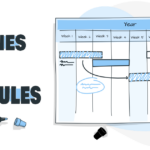Cold calling and lead generation are essential elements of any successful marketing and sales strategy for small businesses. Cold calling involves reaching out to potential customers over the phone to introduce your business and its products or services. Lead generation refers to the process of identifying and cultivating potential customers for your business. Both are important tactics for small businesses that are looking to grow their customer base and increase sales. In this article, we will explore the best practices for cold calling and lead generation, including how to identify and target potential customers, how to structure your sales pitch, and how to track and measure the success of your efforts.
Understanding the importance of cold calling in lead generation
Cold calling is the practice of reaching out to potential customers over the phone to introduce your business and its products or services. Cold calling can be an effective way to generate leads and build relationships with potential customers. However, it can also be a time-consuming and challenging task, particularly for small businesses that may not have the resources or expertise to conduct a large-scale cold calling campaign.
Why Cold Calling is Important for Lead Generation?
Cold calling is an important part of lead generation because it allows businesses to reach potential customers directly and build relationships with them. By speaking directly with potential customers, businesses can learn more about their needs and interests, and tailor their products or services to meet those needs. Additionally, cold calling can help businesses identify and qualify leads, which can save time and resources in the long run.
Best Practices for Cold Calling
There are several best practices that businesses should keep in mind when conducting a cold calling campaign. These include:
- Identify and target potential customers: Before making any calls, it’s important to identify and target potential customers. This can be done by researching your target market, creating a list of potential customers, and narrowing it down to the most promising leads.
- Structure your sales pitch: When making a call, it’s important to have a clear and concise sales pitch that highlights the benefits of your products or services.
- Follow-up: Following up with potential customers is an important part of any cold calling campaign. This can be done by scheduling a follow-up call or sending an email to remind the potential customer of your business and its products or services.
Examples of Cold Calling in Action
- A tech startup that specializes in software development for small businesses, cold-called small businesses to introduce themselves and offer their services. By reaching out to potential customers directly, the startup was able to generate several leads and close several deals.
- A local catering company cold-called local event planners and venue managers to introduce their services. By reaching out to potential customers directly, the catering company was able to generate several leads and land several big events.
In conclusion, cold calling is an important part of lead generation for small businesses. By reaching out to potential customers directly, businesses can learn more about their needs and interests, and tailor their products or services to meet those needs. By following best practices and utilizing real-world examples, small businesses can conduct a successful cold calling campaign that generates leads and grows their customer base.
Setting cold calling goals
Cold calling is a vital part of lead generation for small businesses, but it can also be a time-consuming and challenging task. Setting clear and measurable goals for your cold calling campaign can help you stay focused, track your progress, and measure the success of your efforts. In this article, we will explore how to set effective cold calling goals and provide examples of how to achieve them.
Why Setting Cold Calling Goals is Important
Setting clear and measurable goals for your cold calling campaign is essential for several reasons. First, it helps to keep you focused on the most important aspects of your campaign, such as identifying and targeting potential customers. Second, it allows you to track your progress and measure the success of your efforts. Third, it gives you a clear understanding of what you need to do to achieve your desired results.
How to Set Cold Calling Goals
There are several steps you can take to set effective cold calling goals. These include:
- Define your target market: Before you start making calls, it’s important to define your target market. This includes identifying the demographics of your ideal customer, such as age, income, and location.
- Identify your objectives: Once you have defined your target market, you can then identify your objectives. This includes the number of leads you want to generate, the number of sales you want to close, and the revenue you want to generate.
- Set a timeline: Setting a timeline for your cold calling campaign is crucial. This will help you stay focused and motivated, and it will give you a clear understanding of when you need to achieve your desired results.
Examples of Cold Calling Goals
- A software development company set a goal to generate 50 leads per month through cold calling, with a target close rate of 20%. To achieve this goal, the company identified its target market (small businesses in need of software development services), created a list of potential customers, and structured a sales pitch that highlighted the benefits of their services.
- A local catering company set a goal to increase its revenue by 10% within the next quarter. To achieve this goal, the company targeted event planners and venue managers, and set a goal to generate 50 leads per month through cold calling. The company also set a goal to close 10% of those leads as paying customers.
In conclusion, setting clear and measurable goals for your cold calling campaign is essential for the success of your efforts. By defining your target market, identifying your objectives, and setting a timeline, you can stay focused, track your progress, and measure the success of your campaign. By following these steps and utilizing real-world examples, small businesses can set effective cold calling goals that help them generate leads and increase revenue.
Identifying and researching potential leads
Cold calling is a key element of lead generation, but it is essential to identify and research potential leads before making any calls. By identifying and researching potential leads, businesses can tailor their sales pitch, increase the chances of closing deals, and save time and resources in the long run. In this article, we will explore how to identify and research potential leads and provide examples of how to achieve it.
Why Identifying and Researching Potential Leads is Important
Identifying and researching potential leads is essential to the success of your cold calling campaign. This is because it allows you to tailor your sales pitch to the specific needs and interests of the potential customer. It also increases the chances of closing a deal, as you will have a deeper understanding of the potential customer’s needs and pain points. Additionally, it helps to save time and resources by identifying and focusing on the most promising leads.
How to Identify and Research Potential Leads
There are several steps you can take to identify and research potential leads:
- Define your target market: Before you start researching potential leads, it’s important to define your target market. This includes identifying the demographics of your ideal customer, such as age, income, and location.
- Create a list of potential leads: Once you have defined your target market, you can then create a list of potential leads. This can be done by researching your target market and identifying companies or individuals that fit the demographics of your ideal customer.
- Research potential leads: Once you have created a list of potential leads, it’s time to research them. This includes researching their business, their pain points, and their decision-making process.
Examples of Identifying and Researching Potential Leads
- A software development company identified its target market as small businesses in need of software development services. To create a list of potential leads, the company researched local small businesses and identified those that fit the demographics of their ideal customer. The company then researched each potential lead, including their business, their pain points and their decision-making process. By identifying and researching potential leads, the company was able to tailor its sales pitch to the specific needs of each lead and increase the chances of closing a deal.
- A local catering company identified its target market as event planners and venue managers. To create a list of potential leads, the company researched local event planners and venue managers and identified those that fit the demographics of their ideal customer. The company then researched each potential lead, including their business, their pain points and their decision-making process. By identifying and researching potential leads, the company was able to tailor its sales pitch to the specific needs of each lead and increase the chances of closing a deal.
In conclusion, identifying and researching potential leads is essential to the success of your cold calling campaign. By defining your target market, creating a list of potential leads, and researching them, businesses can tailor their sales pitch, increase the chances of closing deals, and save time and resources in the long run. By following these steps and utilizing real-world examples, small businesses can identify and research potential leads effectively, which will help them generate leads and increase revenue.
Preparing for cold calls
Cold calling can be a time-consuming and challenging task, but it’s an essential element of lead generation for small businesses. To make the most of your cold calling efforts, it’s important to prepare properly before making any calls. In this article, we will explore how to prepare for cold calls and provide examples of how to achieve it.
Why Preparing for Cold Calls is Important
Preparing for cold calls is important because it allows you to make the most of your time and resources. By properly preparing, you can increase the chances of closing deals, improve your sales pitch, and increase the efficiency of your cold calling campaign.
How to Prepare for Cold Calls
There are several steps you can take to prepare for cold calls, including:
- Research your target market: Before making any calls, it’s important to research your target market, including identifying the demographics of your ideal customer, such as age, income, and location.
- Research potential leads: Once you have defined your target market, it’s important to research potential leads. This includes researching their business, their pain points, and their decision-making process.
- Prepare a script: Having a script prepared in advance can help you stay focused and on track during the call. It should include an introduction, a brief overview of your products or services, and a call to action.
- Rehearse: Rehearse your script before making any calls, this will help you to sound more confident and professional.
- Prepare a list of questions: Prepare a list of questions in advance that you can ask during the call to gather more information about the lead.
Examples of Preparing for Cold Calls
- A software development company prepared for its cold calling campaign by researching its target market and identifying small businesses in need of software development services. The company then researched potential leads, including their business, their pain points, and their decision-making process. The company prepared a script that included an introduction, a brief overview of its products or services, and a call to action. The company rehearsed the script and prepared a list of questions to ask during the call.
- A local catering company prepared for its cold calling campaign by researching its target market and identifying event planners and venue managers. The company then researched potential leads, including their business, their pain points, and their decision-making process. The company prepared a script that included an introduction, a brief overview of its services, and a call to action. The company rehearsed the script and prepared a list of questions to ask during the call.
In conclusion, preparing for cold calls is important because it allows you to make the most of your time and resources. By researching your target market, researching potential leads, preparing a script, rehearsing and preparing a list of questions, small businesses can increase the chances of closing deals, improve their sales pitch, and increase the efficiency of their cold calling campaign. By following these steps and utilizing real-world examples, small businesses can prepare for cold calls effectively, which will help them generate leads and increase revenue.
Building a script and practicing
Cold calling is an essential element of lead generation for small businesses, but it can also be a time-consuming and challenging task. One of the key factors in a successful cold calling campaign is having a well-structured script that highlights the benefits of your products or services. In this article, we will explore how to build a script and practice it, and provide examples of how to achieve it.
Why Building a Script and Practicing is Important
Building a script and practicing it is important because it allows you to make the most of your time and resources. A well-structured script can help you stay focused and on track during the call, and it can help you to sound more confident and professional. Additionally, by practicing your script, you can improve your delivery, and increase the chances of closing a deal.
How to Build a Script and Practice
There are several steps you can take to build a script and practice it:
- Research your target market: Before building a script, it’s important to research your target market, including identifying the demographics of your ideal customer, such as age, income, and location.
- Research potential leads: Once you have defined your target market, it’s important to research potential leads. This includes researching their business, their pain points, and their decision-making process.
- Create a script: Create a script that includes an introduction, a brief overview of your products or services, and a call to action.
- Rehearse your script: Rehearsing your script can help you to improve your delivery and increase the chances of closing a deal.
- Practice with mock calls: Practice your script by making mock calls to friends or colleagues, this will help you to become more comfortable with the script, and improve your delivery.
Examples of Building a Script and Practicing
- A software development company built a script for its cold calling campaign by researching its target market and identifying small businesses in need of software development services. The company then researched potential leads, including their business, their pain points, and their decision-making process. The company built a script that included an introduction, a brief overview of its products or services, and a call to action. The company rehearsed the script and practiced with mock calls to improve its delivery and increase the chances of closing a deal.
- A local catering company built a script for its cold calling campaign by researching its target market and identifying event planners and venue managers. The company then researched potential leads, including their business, their pain points, and their decision-making process. The company built a script that included an introduction, a brief overview of its services, and a call to action. The company rehearsed the script and practiced with mock calls to improve its delivery and increase the chances of closing a deal.
In conclusion, building a script and practicing is important because it allows you to make the most of your time and resources. By researching your target market, researching potential leads, creating a script, rehearsing and practicing with mock calls, small businesses can improve their delivery and increase the chances of closing a deal. By following these steps and utilizing real-world examples, small businesses can build a script and practice effectively, which will help them generate leads and increase revenue.
Making effective cold calls
Cold calling is an essential element of lead generation for small businesses, but it can also be a time-consuming and challenging task. To make the most of your cold calling efforts, it’s important to make effective cold calls that are tailored to the specific needs and interests of potential customers. In this article, we will explore how to make effective cold calls and provide examples of how to achieve it.
Why Making Effective Cold Calls is Important
Making effective cold calls is important because it allows you to make the most of your time and resources. By tailoring your sales pitch to the specific needs and interests of potential customers, you can increase the chances of closing a deal, and improve the efficiency of your cold calling campaign.
How to Make Effective Cold Calls
There are several steps you can take to make effective cold calls, including:
- Identify and research potential leads: Before making any calls, it’s important to identify and research potential leads. This includes researching their business, their pain points, and their decision-making process.
- Tailor your sales pitch: Once you have researched potential leads, it’s important to tailor your sales pitch to their specific needs and interests.
- Be prepared: Be prepared with all the information and material you may need during the call, such as a script, a list of questions, and any supporting materials.
- Be confident and professional: During the call, it is essential to be confident, professional and to the point.
- Follow up: After the call, it’s important to follow up with the potential lead to keep the conversation going and to continue building a relationship.
Examples of Making Effective Cold Calls
- A software development company made effective cold calls by identifying and researching potential leads, small businesses in need of software development services. The company tailored its sales pitch to the specific needs and pain points of each lead. During the call, the company was prepared with a script and a list of questions and was able to present their services in a confident and professional manner. The company followed up with each lead to keep the conversation going and to continue building a relationship.
- A local catering company made effective cold calls by identifying and researching potential leads, event planners and venue managers. The company tailored its sales pitch to the specific needs and pain points of each lead. During the call, the company was prepared with a script and a list of questions and was able to present their services in a confident and professional manner. The company followed up with each lead to keep the conversation going and to continue building a relationship.
In conclusion, making effective cold calls is important because it allows you to make the most of your time and resources. By identifying and researching potential leads, tailoring your sales pitch, being prepared, confident and professional, and following up, small businesses can increase the chances of closing a deal, and improve the efficiency of their cold calling campaign. By following these steps and utilizing real-world examples, small businesses can make effective cold calls, which will help them generate leads and increase revenue.
Handling rejection and objections
Cold calling is an essential element of lead generation for small businesses, but it can also be a time-consuming and challenging task. One of the most difficult aspects of cold calling is dealing with rejection and objections from potential customers. In this article, we will explore how to handle rejection and objections and provide examples of how to achieve it.
Why Handling Rejection and Objections is Important
Handling rejection and objections is important because it allows you to make the most of your time and resources. By learning how to handle rejection and objections, you can increase the chances of closing a deal, and improve the efficiency of your cold calling campaign.
How to Handle Rejection and Objections
There are several steps you can take to handle rejection and objections, including:
- Anticipate objections: Before making any calls, it’s important to anticipate the most common objections you might encounter. This will help you to be prepared and to address them effectively.
- Listen actively: During the call, it’s important to listen actively to the potential customer’s objections and concerns. This will help you to understand their perspective and to address their concerns effectively.
- Respond professionally: When addressing objections, it’s important to respond professionally and to the point. Avoid getting defensive or argumentative.
- Follow up: After the call, it’s important to follow up with the potential customer to address any outstanding concerns or objections.
Examples of Handling Rejection and Objections
- A software development company handled rejection and objections by anticipating common objections they might encounter such as “our company already have a software developer” or “we are not in need of your services right now”. The company prepared responses that addressed these objections effectively, such as “I understand your current situation, however, I would like to point out that our software development services are tailored to your specific needs and can help to improve the efficiency of your business.” During the call, the company listened actively to the potential customer’s objections and responded professionally and to the point. After the call, the company followed up with the potential customer to address any outstanding concerns or objections.
- A local catering company handled rejection and objections by anticipating common objections such as “we already have a catering service” or “we are not planning any events at the moment.” The company prepared responses that addressed these objections effectively, such as “I understand your current situation, however, I would like to point out that our catering services are tailored to your specific needs and can help to make your events even more successful.” During the call, the company listened actively to the potential customer’s objections and responded professionally and to the point. After the call, the company followed up with the potential customer to address any outstanding concerns or objections.
In conclusion, Handling rejection and objections is important because it allows you to make the most of your time and resources. By anticipating objections, listening actively, responding professionally, and following up, small businesses can increase the chances of closing a deal, and improve the efficiency of their cold calling campaign. By following these steps and utilizing real-world examples, small businesses can handle rejection and objections effectively, which will help them generate leads and increase revenue.
Building relationships with leads
Cold calling is an essential element of lead generation for small businesses, but it’s not just about closing a deal, it’s also about building relationships with potential customers. In this article, we will explore how to build relationships with leads and provide examples of how to achieve it.
Why Building Relationships with Leads is Important
Building relationships with leads is important because it allows you to make the most of your time and resources. By building relationships with potential customers, you can increase the chances of closing a deal, and also increase the chances of repeat business and customer loyalty in the future.
How to Build Relationships with Leads
There are several steps you can take to build relationships with leads, including:
- Listen actively: During the call, it’s important to listen actively to the potential customer’s needs and interests. This will help you to understand their perspective and to build a relationship based on mutual understanding.
- Follow up: After the call, it’s important to follow up with the potential customer to keep the conversation going and to continue building a relationship.
- Personalize your approach: Personalize your approach to each potential customer. This will help you to build a relationship based on trust and understanding.
- Offer value: Provide value to the potential customer by offering helpful information, resources, or discounts. This will help you to build a relationship based on mutual benefit.
Examples of Building Relationships with Leads
- A software development company built relationships with leads by listening actively to the potential customer’s needs and interests. The company followed up with each lead to keep the conversation going and to continue building a relationship. The company personalized its approach to each potential customer, tailoring its services to their specific needs. The company also offered value to potential customers by providing helpful information, resources and discounts.
- A local catering company built relationships with leads by listening actively to the potential customer’s needs and interests. The company followed up with each lead to keep the conversation going and to continue building a relationship. The company personalized its approach to each potential customer, tailoring its services to their specific needs. The company also offered value to potential customers by providing helpful information, resources and discounts.
In conclusion, building relationships with leads is important because it allows you to make the most of your time and resources. By listening actively, following up, personalizing your approach and offering value, small businesses can increase the chances of closing a deal and also increase the chances of repeat business and customer loyalty in the future. By following these steps and utilizing real-world examples, small businesses can build relationships with leads effectively, which will help them generate leads and increase revenue.
Qualifying leads
Cold calling is an essential element of lead generation for small businesses, but it’s not just about making as many calls as possible. It’s also about identifying and qualifying potential leads that are most likely to convert into paying customers. In this article, we will explore how to qualify leads and provide examples of how to achieve it.
Why Qualifying Leads is Important
Qualifying leads is important because it allows you to make the most of your time and resources. By identifying and qualifying potential leads that are most likely to convert into paying customers, you can increase the chances of closing a deal and improve the efficiency of your cold calling campaign.
How to Qualify Leads
There are several steps you can take to qualify leads, including:
- Identify the decision maker: Before making any calls, it’s important to identify the decision maker within the potential customer’s organization. This will help you to direct your efforts to the person who has the authority to make a purchase.
- Research potential leads: Research potential leads by finding out about their business, their pain points, and their decision-making process. This will help you to understand their needs and to tailor your sales pitch accordingly.
- Ask qualifying questions: During the call, ask qualifying questions to determine whether the potential customer is a good fit for your products or services. These questions can include the budget, timeline, and decision-making process of the potential customer.
- Evaluate the lead: After the call, evaluate the lead to determine whether they are a good fit for your products or services, and whether they are ready to move forward in the sales process.
Examples of Qualifying Leads
- A software development company qualified leads by identifying the decision maker within the potential customer’s organization, researching potential leads, and asking qualifying questions during the call. The company asked questions such as “What is your budget for software development services?” and “What is your timeline for implementing new software?” The company then evaluated the lead to determine whether they were a good fit for the company’s services and ready to move forward in the sales process.
- A local catering company qualified leads by identifying the decision maker within the potential customer’s organization, researching potential leads, and asking qualifying questions during the call. The company asked questions such as “What is your budget for catering services?” and “What is the date of your event?” The company then evaluated the lead to determine whether they were a good fit for the company’s services and ready to move forward in the sales process.
In conclusion, qualifying leads is important because it allows you to make the most of your time and resources. By identifying the decision maker, researching potential leads, asking qualifying questions, and evaluating the lead, small businesses can increase the chances of closing a deal and improve the efficiency of their cold calling campaign. By following these steps and utilizing real-world examples, small businesses can qualify leads effectively, which will help them generate leads and increase revenue.
Setting follow-up appointments and calls
Cold calling is an essential element of lead generation for small businesses, but it’s not just about making the initial call. It’s also about setting follow-up appointments and calls to continue building relationships with potential customers and to increase the chances of closing a deal. In this article, we will explore how to set follow-up appointments and calls and provide examples of how to achieve it.
Why Setting Follow-Up Appointments and Calls is Important
Setting follow-up appointments and calls is important because it allows you to make the most of your time and resources. By setting follow-up appointments and calls, you can continue building relationships with potential customers, address any outstanding concerns or objections, and increase the chances of closing a deal.
How to Set Follow-Up Appointments and Calls
There are several steps you can take to set follow-up appointments and calls, including:
- Establish a timeline: During the initial call, establish a timeline for the follow-up appointment or call. This will help to ensure that the potential customer is still interested and that the timing is right for them.
- Confirm the follow-up: After the initial call, confirm the follow-up appointment or call with the potential customer. This will help to ensure that the appointment or call is still on their calendar and that they are still interested.
- Prepare for the follow-up : Before the follow-up appointment or call, prepare by reviewing notes from the initial call, researching the potential customer’s business, and preparing any necessary materials or information.
- Be consistent: Follow-up consistently and be on time. This will help to build trust and a sense of reliability with the potential customer.
Examples of Setting Follow-Up Appointments and Calls
- A software development company set follow-up appointments and calls by establishing a timeline during the initial call. For example, “I would like to schedule a follow-up call with you in two weeks to discuss the details of our software development services further.” The company confirmed the follow-up appointment or call with the potential customer and prepared for it by reviewing notes from the initial call, researching the potential customer’s business, and preparing any necessary materials or information. The company was consistent in their follow-up efforts and was always on time for the scheduled appointments or calls.
- A local catering company set follow-up appointments and calls by establishing a timeline during the initial call. For example, “I would like to schedule a follow-up call with you in one week to discuss the details of our catering services for your upcoming event.” The company confirmed the follow-up appointment or call with the potential customer and prepared for it by reviewing notes from the initial call, researching the potential customer’s business, and preparing any necessary materials or information. The company was consistent in their follow-up efforts and was always on time for the scheduled appointments or calls.
In conclusion, setting follow-up appointments and calls is important because it allows you to make the most of your time and resources. By establishing a timeline, confirming the follow-up, preparing for it, and being consistent, small businesses can continue building relationships with potential customers, address any outstanding concerns or objections, and increase the chances of closing a deal. By following these steps and utilizing real-world examples, small businesses can set follow-up appointments and calls effectively, which will help them generate leads and increase revenue.
Tracking and managing leads
Cold calling is an essential element of lead generation for small businesses, but it’s not just about making calls and setting appointments. It’s also about tracking and managing leads to ensure that you are making the most of your time and resources. In this article, we will explore how to track and manage leads and provide examples of how to achieve it.
Why Tracking and Managing Leads is Important
Tracking and managing leads is important because it allows you to make the most of your time and resources. By tracking and managing leads, you can ensure that you are following up with the right leads at the right time, that you are addressing any outstanding concerns or objections, and that you are increasing the chances of closing a deal.
How to Track and Manage Leads
There are several steps you can take to track and manage leads, including:
- Create a lead tracking system: Create a system for tracking leads, such as a spreadsheet or CRM software. This will help you to keep track of the leads that you have contacted, the leads that you need to follow up with, and the leads that have converted into paying customers.
- Monitor lead progress: Monitor the progress of leads by following up with them, addressing any outstanding concerns or objections, and keeping track of their status in your lead tracking system.
- Prioritize leads: Prioritize leads based on their likelihood of converting into paying customers, and focus your efforts on the leads that are most likely to convert.
- Evaluate lead performance: Evaluate the performance of leads in terms of conversion rate and return on investment. This will help you to identify which leads are most valuable to your business and to adjust your lead generation strategy accordingly.
Examples of Tracking and Managing Leads
- A software development company tracked and managed leads by creating a lead tracking system using a spreadsheet. The company monitored lead progress by following up with leads, addressing any outstanding concerns or objections, and keeping track of their status in the spreadsheet. The company prioritized leads based on their likelihood of converting into paying customers, and focused its efforts on the leads that were most likely to convert. The company also evaluated lead performance in terms of conversion rate and return on investment to identify which leads were most valuable to the business.
- A local catering company tracked and managed leads by creating a lead tracking system using CRM software. The company monitored lead progress by following up with leads, addressing any outstanding concerns or objections, and keeping track of their status in the CRM. The company also prioritized leads based on their likelihood of converting into paying customers and focused its efforts on the leads that were most likely to convert. The company also evaluated lead performance in terms of conversion rate and return on investment to identify which leads were most valuable to the business.
In conclusion, tracking and managing leads is important because it allows you to make the most of your time and resources. By creating a lead tracking system, monitoring lead progress, prioritizing leads, and evaluating lead performance, small businesses can ensure that they are following up with the right leads at the right time, addressing any outstanding concerns or objections, and increasing the chances of closing a deal. By following these steps and utilizing real-world examples, small businesses can track and manage leads effectively, which will help them generate leads and increase revenue.
Using cold calling technology and tools
Cold calling is an essential element of lead generation for small businesses, but it can be time-consuming and difficult without the right technology and tools. In this article, we will explore how to use cold calling technology and tools and provide examples of how to achieve it.
Why Using Cold Calling Technology and Tools is Important
Using cold calling technology and tools is important because it allows you to make the most of your time and resources. By using the right technology and tools, you can automate repetitive tasks, make it easier to manage leads and calls, and increase the chances of closing a deal.
How to Use Cold Calling Technology and Tools
There are several steps you can take to use cold calling technology and tools, including:
- Invest in a CRM: Invest in a CRM (Customer Relationship Management) system to manage leads, calls, and customer data. This will help you to keep track of leads and calls, manage customer data, and automate repetitive tasks.
- Use call tracking software: Use call tracking software to keep track of calls and to analyze call data. This will help you to identify patterns and trends in your cold calling efforts.
- Utilize call scripts: Use call scripts to automate repetitive tasks and to help you stay on track during calls.
- Integrate with other tools: Integrate your cold calling technology and tools with other tools such as email marketing software, social media management tools, and analytics software to improve your lead generation efforts.
Examples of Using Cold Calling Technology and Tools
- A software development company used cold calling technology and tools by investing in a CRM system to manage leads, calls, and customer data. The company also used call tracking software to keep track of calls and to analyze call data. The company utilized call scripts to automate repetitive tasks and to help them stay on track during calls. The company also integrated its cold calling technology and tools with other tools such as email marketing software and analytics software to improve its lead generation efforts.
- A local catering company used cold calling technology and tools by investing in a CRM system to manage leads, calls, and customer data. The company also used call tracking software to keep track of calls and to analyze call data. The company utilized call scripts to automate repetitive tasks and to help them stay on track during calls. The company also integrated its cold calling technology and tools with other tools such as social media management tools and analytics software to improve its lead generation efforts.
In conclusion, using cold calling technology and tools is important because it allows you to make the most of your time and resources. By investing in a CRM, using call tracking software, utilizing call scripts, and integrating with other tools, small businesses can automate repetitive tasks, make it easier to manage leads and calls, and increase the chances of closing a deal. By following these steps and utilizing real-world examples, small businesses can use cold calling technology and tools effectively, which will help them generate leads and increase revenue. Additionally, using these tools can also give you insights on where you should focus your cold calling efforts and how to improve them, ultimately leading to better results.
Measuring and analyzing cold calling performance
Cold calling is an essential element of lead generation for small businesses, but it’s important to measure and analyze the performance of your cold calling efforts to see if they are working and to identify areas for improvement. In this article, we will explore how to measure and analyze cold calling performance and provide examples of how to achieve it.
Why Measuring and Analyzing Cold Calling Performance is Important
Measuring and analyzing cold calling performance is important because it allows you to make the most of your time and resources. By measuring and analyzing cold calling performance, you can see if your efforts are working, identify areas for improvement, and adjust your strategy accordingly.
How to Measure and Analyze Cold Calling Performance
There are several steps you can take to measure and analyze cold calling performance, including:
- Set goals and metrics: Set goals and metrics for your cold calling efforts, such as the number of calls made, the number of leads generated, and the conversion rate.
- Track performance: Track performance by keeping track of calls, leads, and conversions, and by analyzing call data.
- Analyze performance: Analyze performance by comparing it to your goals and metrics and by identifying patterns and trends in your cold calling efforts.
- Adjust your strategy: Use the insights gained from measuring and analyzing performance to adjust your cold calling strategy.
Examples of Measuring and Analyzing Cold Calling Performance
- A software development company measured and analyzed cold calling performance by setting goals and metrics, such as the number of calls made, the number of leads generated, and the conversion rate. The company tracked performance by keeping track of calls, leads, and conversions, and by analyzing call data. The company analyzed performance by comparing it to the goals and metrics and by identifying patterns and trends in their cold calling efforts. Based on these insights, the company adjusted their cold calling strategy to focus on the leads and tactics that were most effective.
- A local catering company measured and analyzed cold calling performance by setting goals and metrics, such as the number of calls made, the number of leads generated, and the conversion rate. The company tracked performance by keeping track of calls, leads, and conversions, and by analyzing call data. The company analyzed performance by comparing it to the goals and metrics and by identifying patterns and trends in their cold calling efforts. Based on these insights, the company adjusted their cold calling strategy to focus on the leads and tactics that were most effective.
In conclusion, measuring and analyzing cold calling performance is important because it allows you to make the most of your time and resources. By setting goals and metrics, tracking performance, analyzing performance, and adjusting your strategy, small businesses can see if their cold calling efforts are working, identify areas for improvement, and adjust their strategy accordingly. By following these steps and utilizing real-world examples, small businesses can measure and analyze cold calling performance effectively, which will help them generate leads and increase revenue. Additionally, it allows them to optimize their cold calling strategies and tactics, which can lead to more successful lead generation and sales. It’s important to remember that regular measurement and analysis of your cold calling performance is necessary to ensure that your efforts are aligned with your goals and that you can make data-driven decisions to improve it.
Providing cold calling training and development
Cold calling is an essential element of lead generation for small businesses, but it’s important to provide training and development opportunities to ensure that your team is equipped with the necessary skills and knowledge to succeed. In this article, we will explore how to provide cold calling training and development and provide examples of how to achieve it.
Why Providing Cold Calling Training and Development is Important
Providing cold calling training and development is important because it allows you to make the most of your time and resources. By providing training and development opportunities, you can ensure that your team is equipped with the necessary skills and knowledge to succeed, and that they are able to generate leads and increase revenue effectively.
How to Provide Cold Calling Training and Development
There are several steps you can take to provide cold calling training and development, including:
- Develop a training program: Develop a comprehensive training program that covers all aspects of cold calling, including identifying and researching potential leads, building relationships with leads, handling rejection and objections, and closing deals.
- Provide ongoing training and development: Provide ongoing training and development opportunities to ensure that your team is up-to-date with the latest cold calling strategies and tactics.
- Encourage practice and feedback: Encourage your team to practice their cold calling skills and to provide feedback on their efforts.
- Hire a coach or mentor: Hire a coach or mentor to provide guidance and support to your team.
Examples of Providing Cold Calling Training and Development
- A software development company provided cold calling training and development by developing a comprehensive training program that covered all aspects of cold calling. The company also provided ongoing training and development opportunities to ensure that their team was up-to-date with the latest cold calling strategies and tactics. The company encouraged practice and feedback by creating opportunities for the sales team to practice their cold calling skills and provided opportunities for them to give and receive feedback. The company also hired a coach or mentor to provide guidance and support to the sales team.
- A local catering company provided cold calling training and development by developing a comprehensive training program that covered all aspects of cold calling. The company also provided ongoing training and development opportunities to ensure that their team was up-to-date with the latest cold calling strategies and tactics. The company encouraged practice and feedback by creating opportunities for the sales team to practice their cold calling skills and provided opportunities for them to give and receive feedback. Additionally, they hired a coach or mentor to provide guidance and support to the sales team. The company also provided role-playing and simulation training to help the sales team to be prepared for any kind of scenario that they may encounter during cold calls.
In conclusion, providing cold calling training and development is important because it allows you to make the most of your time and resources. By developing a comprehensive training program, providing ongoing training and development opportunities, encouraging practice and feedback, and hiring a coach or mentor, small businesses can ensure that their team is equipped with the necessary skills and knowledge to succeed in cold calling and lead generation. By following these steps and utilizing real-world examples, small businesses can provide cold calling training and development effectively, which will help them generate leads and increase revenue. Additionally, providing training and development opportunities can also increase the team’s confidence and motivation, leading to a more successful sales team.
Staying up-to-date with industry trends and best practices
Cold calling is an essential element of lead generation for small businesses, but it’s important to stay up-to-date with industry trends and best practices to ensure that your efforts are effective. In this article, we will explore how to stay up-to-date with industry trends and best practices and provide examples of how to achieve it.
Why Staying Up-to-Date with Industry Trends and Best Practices is Important
Staying up-to-date with industry trends and best practices is important because it allows you to make the most of your time and resources. By staying up-to-date with industry trends and best practices, you can ensure that your cold calling efforts are effective, and that you are using the latest strategies and tactics to generate leads and increase revenue.
How to Stay Up-to-Date with Industry Trends and Best Practices
There are several steps you can take to stay up-to-date with industry trends and best practices, including:
- Read industry publications: Read industry publications and stay informed about the latest trends and best practices in cold calling and lead generation.
- Attend conferences and events: Attend conferences and events related to cold calling and lead generation to learn from experts and to network with other professionals.
- Join professional organizations: Join professional organizations and take advantage of the resources and networking opportunities they provide.
- Keep an open mind: Be open to new ideas and new ways of doing things, and be willing to try new strategies and tactics.
Examples of Staying Up-to-Date with Industry Trends and Best Practices
- A software development company stayed up-to-date with industry trends and best practices by reading industry publications, attending conferences and events, and joining professional organizations. The company also kept an open mind and was willing to try new strategies and tactics to improve their cold calling efforts.
- A local catering company stayed up-to-date with industry trends and best practices by reading industry publications, attending conferences and events, and joining professional organizations. The company also kept an open mind and was willing to try new strategies and tactics to improve their cold calling efforts. The company also made sure to stay informed about the latest technology and tools that can be used to enhance their cold calling efforts, such as AI-powered dialing systems and call recording software.
In conclusion, staying up-to-date with industry trends and best practices is important because it allows you to make the most of your time and resources. By reading industry publications, attending conferences and events, joining professional organizations, and keeping an open mind, small businesses can ensure that their cold calling efforts are effective and that they are using the latest strategies and tactics to generate leads and increase revenue. By following these steps and utilizing real-world examples, small businesses can stay up-to-date with industry trends and best practices effectively, which will help them generate leads and increase revenue. Additionally, staying informed about the latest industry trends and best practices can give you a competitive edge and keep you ahead of the curve.
Continuously improving and refining the cold calling process
Cold calling is an essential element of lead generation for small businesses, but it’s important to continuously improve and refine the cold calling process to ensure that your efforts are effective. In this article, we will explore how to continuously improve and refine the cold calling process and provide examples of how to achieve it.
Why Continuously Improving and Refining the Cold Calling Process is Important
Continuously improving and refining the cold calling process is important because it allows you to make the most of your time and resources. By continuously improving and refining the cold calling process, you can ensure that your efforts are effective, and that you are using the most efficient and effective strategies and tactics to generate leads and increase revenue.
How to Continuously Improve and Refine the Cold Calling Process
There are several steps you can take to continuously improve and refine the cold calling process, including:
- Review and analyze performance: Review and analyze performance on a regular basis to identify areas for improvement and to make data-driven decisions.
- Gather feedback: Gather feedback from your team and from leads to get a better understanding of how your cold calling efforts are being received.
- Test new strategies and tactics: Test new strategies and tactics to see what works and what doesn’t.
- Make adjustments: Make adjustments to your cold calling process based on the insights gained from performance analysis, feedback, and testing.
Examples of Continuously Improving and Refining the Cold Calling Process
- A software development company continuously improved and refined the cold calling process by reviewing and analyzing performance on a regular basis, gathering feedback from their team and from leads, testing new strategies and tactics, and making adjustments to their cold calling process based on the insights gained.
- A local catering company continuously improved and refined the cold calling process by reviewing and analyzing performance on a regular basis, gathering feedback from their team and from leads, testing new strategies and tactics, and making adjustments to their cold calling process based on the insights gained. They also made sure to stay informed about the latest industry trends and best practices and incorporated them into their cold calling process.
In Conclusion, continuously improving and refining the cold calling process is important because it allows you to make the most of your time and resources. By reviewing and analyzing performance, gathering feedback, testing new strategies and tactics, and making adjustments, small businesses can ensure that their cold calling efforts are effective and that they are using the most efficient and effective strategies and tactics to generate leads and increase revenue. By following these steps and utilizing real-world examples, small businesses can continuously improve and refine the cold calling process effectively, which will help them generate leads and increase revenue. Additionally, continuously improving and refining the cold calling process can also help to increase the team’s motivation and the success rate of closing deals.













